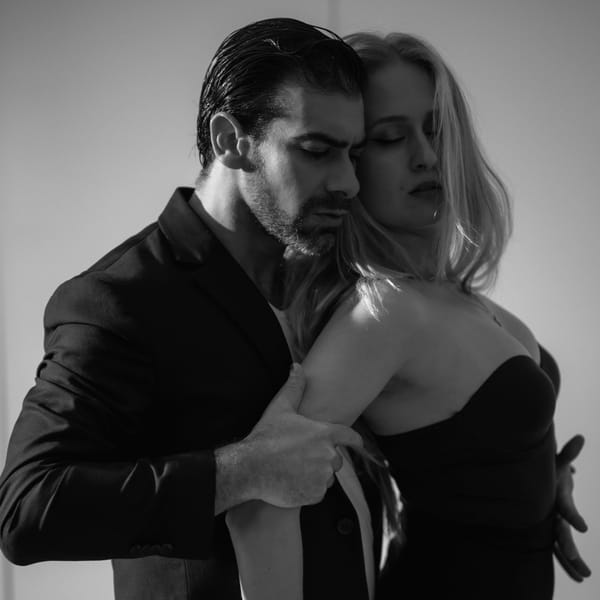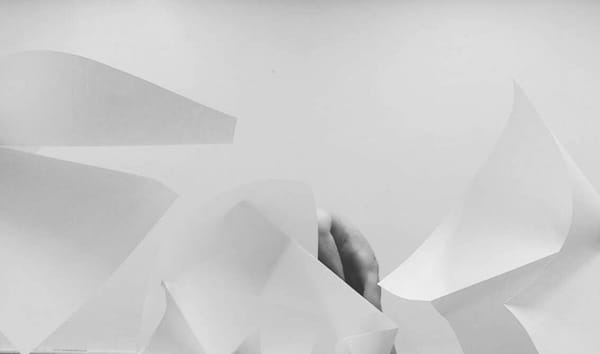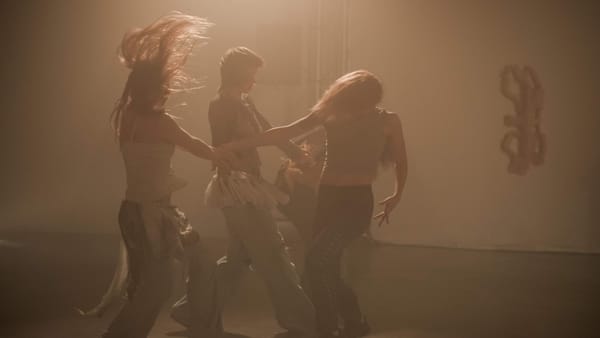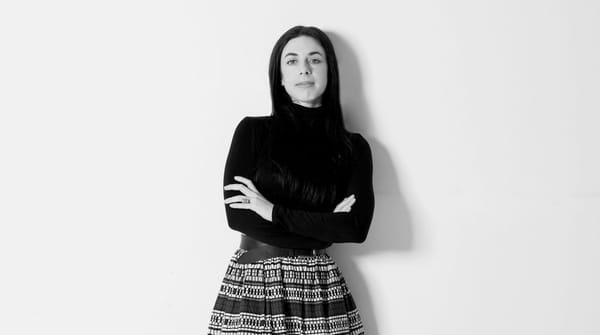The Art of Being Touched by the Untouchable
By Sandra Aguado Mucientes — A cultural misstep in Scotland opens her eyes to the many ways we connect—from the physical closeness of Mediterranean culture to the soul-deep touching that happens through art and genuine human encounters.
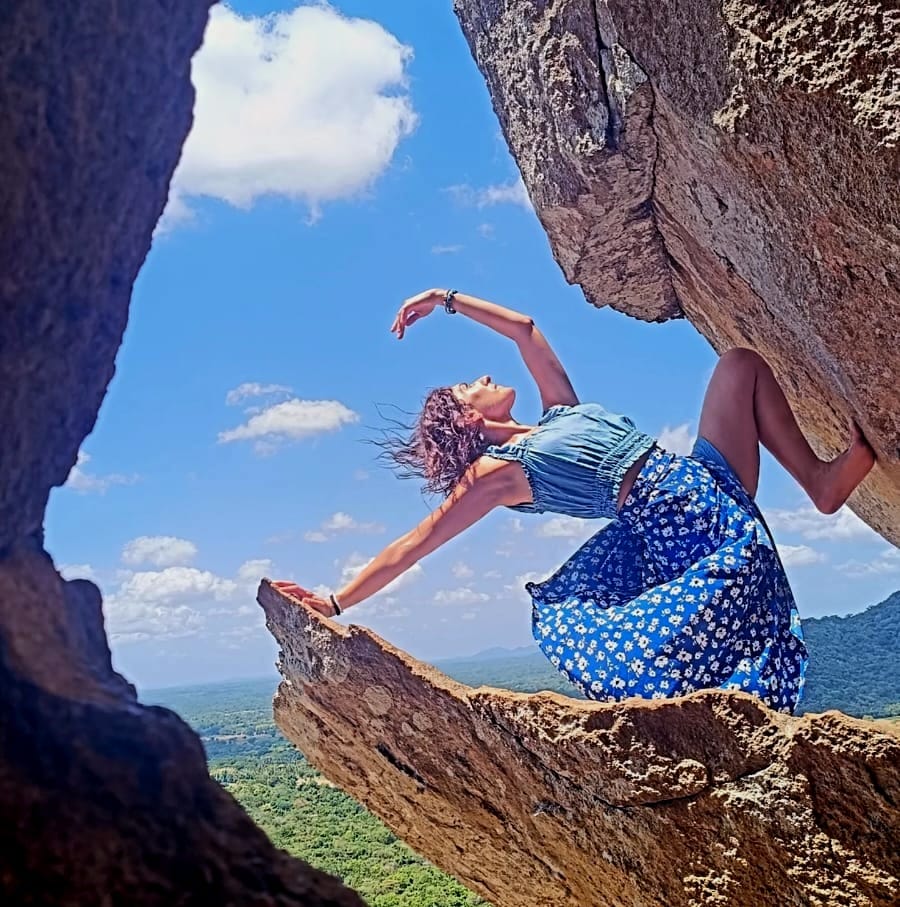
by Sandra Aguado Mucientes
In July 2009, I traveled to a country I had never been to before—one where English was the first language, but not mine. My plane landed in Edinburgh at nightfall, and I took a cab to the residence that would be my home for the next six weeks.
I rang the doorbell. A tall, friendly young man with dark hair and a warm smile opened the door, holding a pizza box in his left hand. He extended his right hand and introduced himself. As any good Spaniard would, I responded with two kisses on the cheek. His face turned as red as a tomato. In that moment, I realized my well-meaning gesture had been a mistake.
Until then, I had never truly considered the profound importance of touch—or how its meaning varies from culture to culture. For me, it was a natural way of saying hello. But I had clearly crossed a boundary.
The Culture of Closeness
I come from a culture where physical closeness begins at birth. When we cry as infants, we’re held. We are kissed and embraced to show love and affection. Avoiding such closeness—even skipping the customary two kisses when meeting someone new—can come across as cold or distant.
We embrace students when they’re unwell. We gently touch the arm of an elderly person to help them off the bus. These gestures, far from being romantic or sexual, are expressions of care, trust, and respect.
Though I could discuss this for hours over tea in proper British fashion, I want to focus on just one meaning of “touch”: the artistic and intangible kind.
I’m Sandra, born in Valladolid, Spain. My friends call me Aguado, Pepita, Sami, Sandrina, Sandri, or Sandy. One thing that defines me—perhaps because of the Mediterranean blood running through my veins—is my love of embraces and human closeness.
I’ve always been surrounded by music, dance, art, and culture. At three years old, I began dancing traditional Spanish dances. At eight, I took up the violin, and since then I’ve never stopped training academically and artistically in various dance and musical styles. Performance and education have become my career, my passion, and my life.
The Many Meanings of Touch
Touch holds many meanings. Physical contact in dance or music differs greatly from casual everyday touch. But the most meaningful form, for me, is "touching with the soul"—a concept shaped by all my life experiences.
Since childhood, I’ve been taught that through music, dance, art, and culture, we can reach people’s hearts. There’s no single way to connect; each person responds differently.
Can you touch someone without physical contact? I believe soul-touching is the most intimate, personal, and beautiful way to connect. It’s the purest kind of touch.
That doesn’t mean physical touch is wrong. In the arts—especially dance and music—contact plays a crucial role. It’s essential for developing chemistry, achieving technique, and creating beauty.
In Spanish dances like jotas, sevillanas, and pasodobles, minimal contact still fosters deep connection. The same is true in contemporary dance, ballet, contact improvisation, modern, and jazz. Touch in dance is never sexual—it’s part of the technique, the steps, the expression.
In music, contact is rare—except when a teacher adjusts your posture or grip. When my violin teacher corrected how I held the bow, it was simply the best way to teach proper technique. It never felt inappropriate.
The same has been true in my dance training, my choreography work, and in the fourteen years I’ve spent teaching. Contact has always felt necessary and respectful, never uncomfortable.
When Art Touches the Soul
But I want to go deeper—to explore the effect of dance, music, and art on people from a more abstract perspective.
When I talk about “touching” through art, I mean the moments when a piece, a performer, or a choreographer reaches your soul. When a movement, a technique, a story awakens your emotions—joy, sadness, curiosity—then you’ve been touched.
"It doesn’t touch if it doesn’t reach your soul." And what’s beautiful is that this moment looks different for everyone.
Moments of Connection
In August 2013, I spent four months with the National Dance Company of Iceland. I observed their work, met the dancers, studied their techniques, and felt the sensitivity of each artist. I learned their repertoire and worked with choreographers, absorbing their views on touch in performance. It was an incredible experience.
In 2014, I performed in a piece by Korean choreographer Yong Min Cho, alongside two dear friends from Thailand and Italy. We had no physical contact on stage, but we knew the performance had touched the audience—through the live music, the presence of deaf actors, and the emotion in our dance.
In 2015, I interned at the Friedrichstadt-Palast in Berlin. I worked with choreographers, dancers, artistic directors, and musicians. Watching their process and seeing what they transmitted to the audience each night was priceless.
From 2021 to 2024, I lived in Chicago, where I trained with dancers from Hubbard Street Dance Chicago, Chicago Movement Collective, and Visceral Dance Theatre. I took classes with artists from Los Angeles and New York, worked alongside Broadway performers, and met countless professionals who became dear friends. Each brought different backgrounds and artistic perspectives that enriched me personally and opened new visions of what dance could be. But more than technique or artistry, they taught me new ways of connecting—not just between dancers, but between people across cultures and experiences.
I could speak endlessly about the people I’ve met throughout my career—as dancer, observer, choreographer, and teacher. In every experience, I’ve been touched.
I remember once, in Mexico, a dancer told me: “I dance because dancing makes me feel alive.” Her words touched my soul, because I felt the same. When someone speaks with such conviction, you feel it on stage—in how they move, in who they are.
The True Meaning of Touch
I believe we can be touched without physical contact—contact that may be misunderstood but can also express affection, friendship, love, or cultural identity. But soul-touching—through actions, words, and small moments of care—is what matters most.
Like the dancer whose sensitivity gives you goosebumps and stops time. The musician who transports you with every note. The painter who stirs your imagination through splashes of color.
Like the duet that goes beyond perfect technique to reveal deep connection. The children who rehearse for months to share their joy at the school festival. The dance company that gives its all every night. The amateur dancers who work day jobs and perform with such heart that technical precision becomes secondary.
There are thousands of stories like these. To me, this is the true meaning of touching.
Touching Through Human Connection
It’s the same with people. Some pass through our lives quickly. Others leave marks—some we don’t like, some we cherish. But all teach us something.
When your day brightens because someone asks how you are. When a person spends their limited time just being with you. When a stranger smiles, holds the door, or welcomes you in—with a pizza box in one hand and a warm handshake in the other.
That, for me, is what touching means. Because as I said: "It doesn’t touch if it doesn’t reach your soul."
Final Note
And now, not to take up more of your time, I say goodbye—with a cup of hot coffee in my right hand, looking out my window as dusk falls, reflecting on everything I’ve written about the act of touch, that broad, sometimes controversial concept.
Without further delay, and in the most Shakespearean style, I simply say:
"To touch or not to touch—that is the question."
Sandra Aguado Mucientes is a Spanish dancer, choreographer, and educator from Valladolid. She has worked with dance companies across Europe and continues to explore the intersection of culture, art, and human connection through her performances and teaching.


